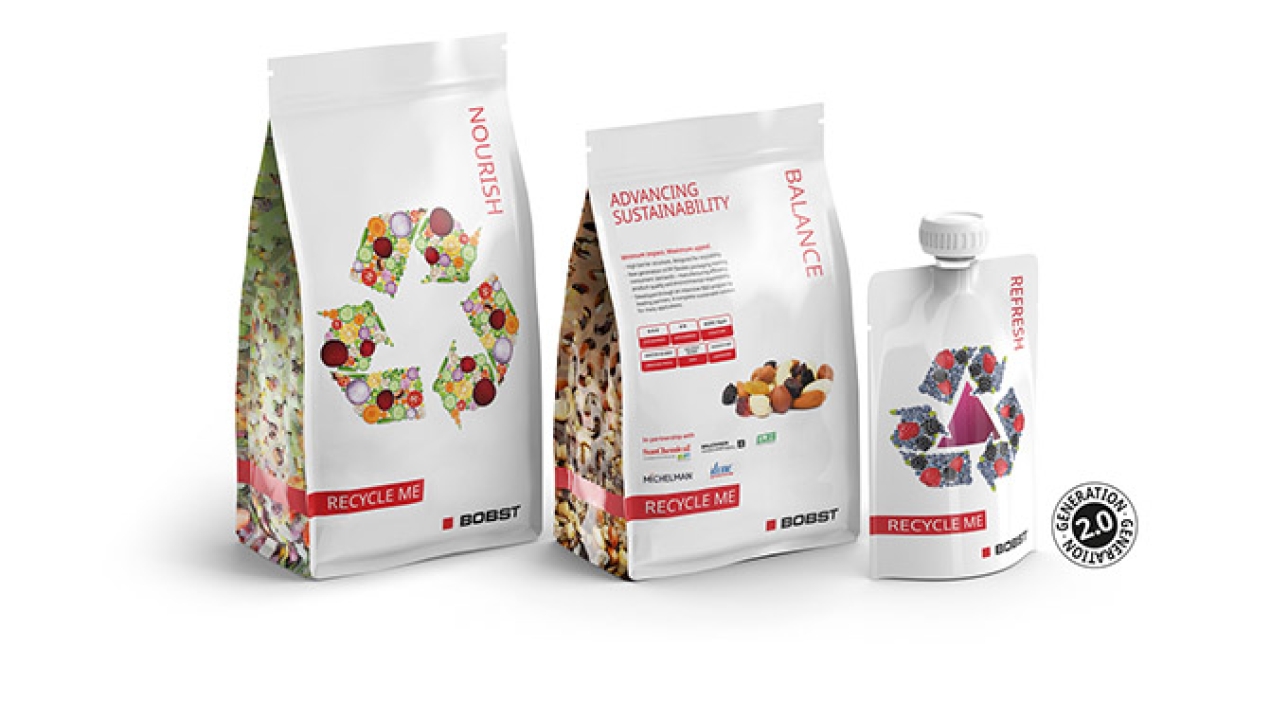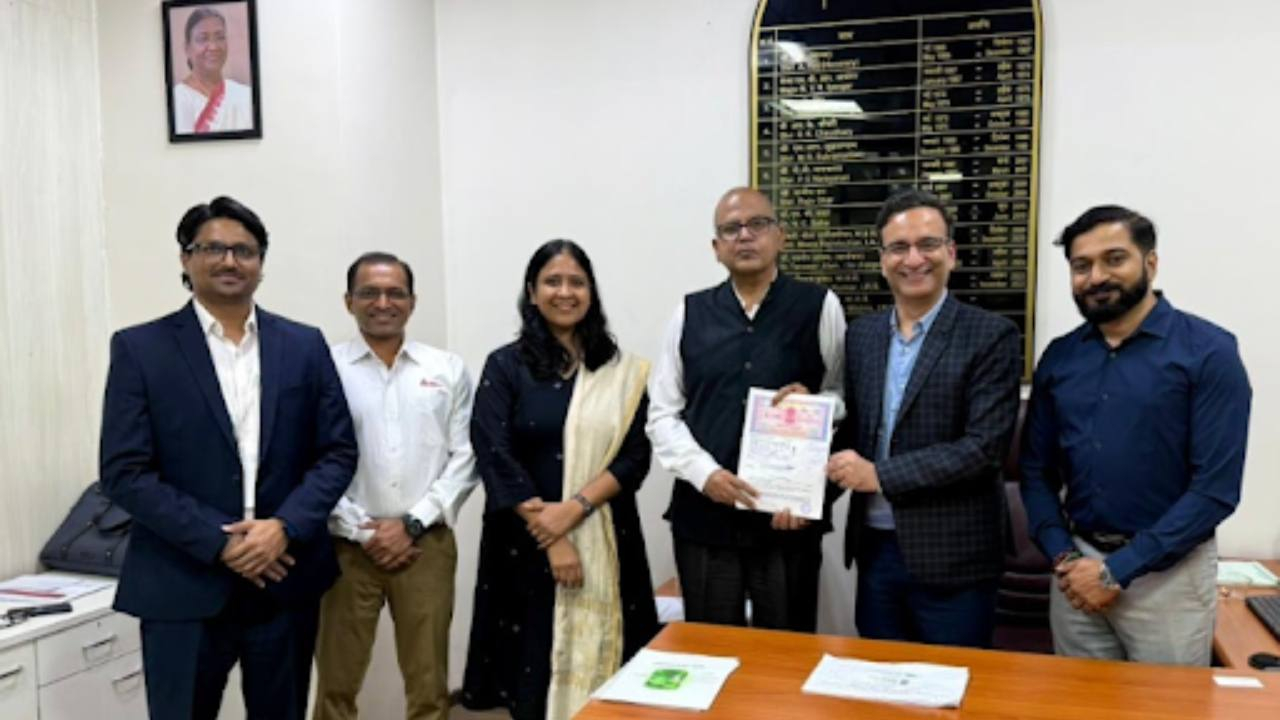Bobst launches recyclable high barrier samples
Bobst and its partners have released Generation 2.0 samples of high barrier flexible packaging marking a key milestone in their pioneering work to replace non-recyclable multi-material packaging structures with mono-material alternatives designed for recycling.

After several different samples of mono-material standup pouches (MDO PE, BOPE, BOPP and CPP) were launched at K 2019, the partners involved have continued their investment and research to progress the samples further, to ensure all industry requirements are met in terms of processability, barrier, safety and optical quality.
‘Finding sustainable alternatives to non-recyclable plastics is one of the most important challenges of our times,’ said Nick Copeland, director of R&D at Bobst. ‘It is a particular challenge for flexible packaging such as that used for food packaging, where the high barrier protection against oxygen and water that prevents deterioration is currently provided by multi-layer, multi-material packaging, which cannot be recycled. This next generation of high barrier mono-material structures brings us one step closer to being able to provide completely recyclable solutions to replace non-recyclable packaging.’
‘Brückner is convinced that the future will continue to belong to plastics if they are used and reused sustainably,’ commented Helmut Huber, COO of sales and project management at Brückner Maschinenbau. ‘As part of a circular economy, the undeniable advantages of plastic can be combined absolutely well with the sustainability goals of a modern society. Regarding the discussions about recycling targets for plastic packaging, we see mono-material packaging structures clearly on the rise.’
The Generation 2.0 samples include ultra-high and high barrier full polypropylene laminated pouches, printed in gravure and recyclable, with the option of an AluBond metalized barrier or transparent AlOx (aluminum oxide) barrier layer and solvent-free barrier adhesive and/or topcoat. The pack also includes a UV flexo combined with digital inkjet printing for AluBond metallization, full polypropylene laminated bags with barrier performances - using a solventless adhesive again for a mono-material pouch designed for recycling.
The third sample is a UV low-migration flexo printing, providing barrier with AluBond metallization, on full low-density polyethylene laminated pouches, and lastly, a CI flexo water-based printing on full MDO-PE laminated pouches with AluBond metallization, providing ultra-high barrier using a high barrier solventless adhesive.
Every project partner, including Dow, Brückner Maschinenbau, Hosokawa Alpin, Elba, Sun Chemical, Indopoly and Uflex, has played an essential role in achieving this important milestone to develop and industrialize a series of new mono-materials.
‘Recyclability brings a major layer of complexity to designing efficient and effective packaging. We strongly believe that collaboration with the whole value chain is not only the fastest but the only way to help accelerate the market moving towards ambitious sustainability targets,’ said Jaroslaw Jelinek, global marketing manager for oriented PE technologies at Dow Packaging & Specialty Plastics. ‘We are delighted to be part of this knowledgeable and innovative project team and bring the next generation solutions to the market.’
‘Sun Chemical is committed to contributing to a more circular economy and is dedicated to supporting the flexible packaging industry to becoming more sustainable,’ commented Nicolas Bétin, director of product strategy for EMEA for packaging inks and materials and global sustainability business leader at Sun Chemical. ‘Close collaboration between the various players in the value chain, sharing knowledge and competence, can lead to tangible results which can efficiently be implemented in the market. This is precisely the case of this co-operation.’
‘This is a partnership of like-minded companies, who are all determined to develop sustainable alternatives to non-recyclable flexible packaging. The Bobst Competence Centers are used to test the viability of the materials in terms of their barrier, printing and lamination, to ensure they can cope throughout the production process. We are thrilled to contribute to this important milestone,’ concluded Copeland.
Stay up to date
Subscribe to the free Label News newsletter and receive the latest content every week. We'll never share your email address.

